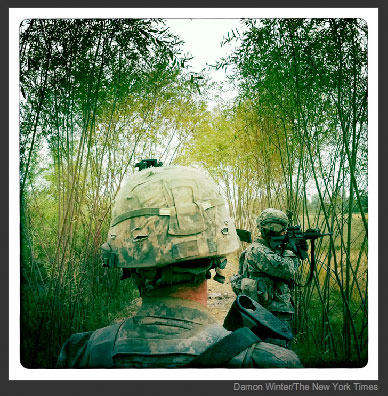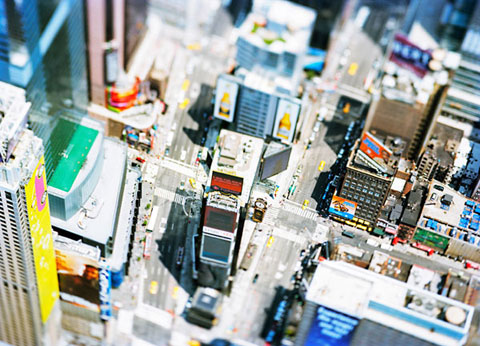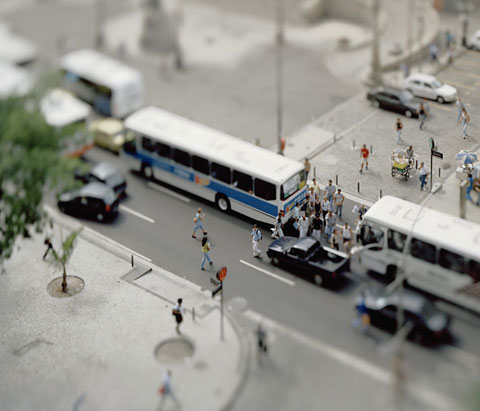Innovation is difficult to achieve in photography, particularly if one remains rooted in the descriptive side of the medium. There has never been a requirement, of course, that one stick to what is sometimes called “straight photography.” And from the get go, photographers have used the medium to create alternate realities–staged or transformed.
As is easy to tell from my work, I am partial to reality based photography, and I eschew what I see as passing technological fads that come during or after the fact of exposing an image on film or a digital sensor. Sure, we can get into semantic philosophical discussions about what reality is, or to paraphrase former president Bill Clinton, on the meaning of what is is. Be that as it may, I’d like to propose two trendy “innovations” for the nearest trash bin.
Selective focus tilt/shift photography. Olivio Barbieri did it first–or at least made a career of it first–and then there’s Miklos Gaal. And now there are legions of followers using either expensive tilt/shift lenses, like those used in architectural photography, or Photoshop to achieve similar results. The world looks toy-like, miniature. In all the pictures, all the time.

Photograph by Damon Winter from Lens Blog, the New York Times
Lens, the New York Times photo journalism blog brings to our attention a new effect. It’s the Hipstomatic app for use with cell phone cameras. It makes everything greenish, washed out in the middle, and contrasty. Damon Winter used it in making photographs of soldiers in Afghanistan, and he makes a very compelling case for the notion that he is telling stories with the camera, which allows for interpretive latitude. Others argue that it undermines the truth telling of photo journalism.
I have no problem with Winter’s perspective on story telling–I have grown skeptical of the highly selective “truthiness” of much photo journalism, and I applaud the efforts of photographers like Tim Hetherington to push the boundaries. In any case, my problem with effects like the Hipstomatic app is that they are so nakedly obvious. And as such I find it near impossible to see beyond the effects to what may be larger intended meanings.

JR, photographs on the Israeli West Bank barrier
The Times Magazine just did a multi-page article on JR, the “photograffeur,” who uses photography as street art. He photographs people in their communities and then blows up the images to huge size and pastes them to walls, buildings, even on the roofs of whole shanty towns–in the latter case visible only from the air. He gives faces and voices to people who are often unseen, unheard. This is photographic performance documented, integrated into the physical places where the images originate. This is brave stuff. Innovative. Not always legal. Using technology. Sometimes walking a thin line between empowerment and exploitation. But using the power of images and media in a new way. Without gimmicks.

